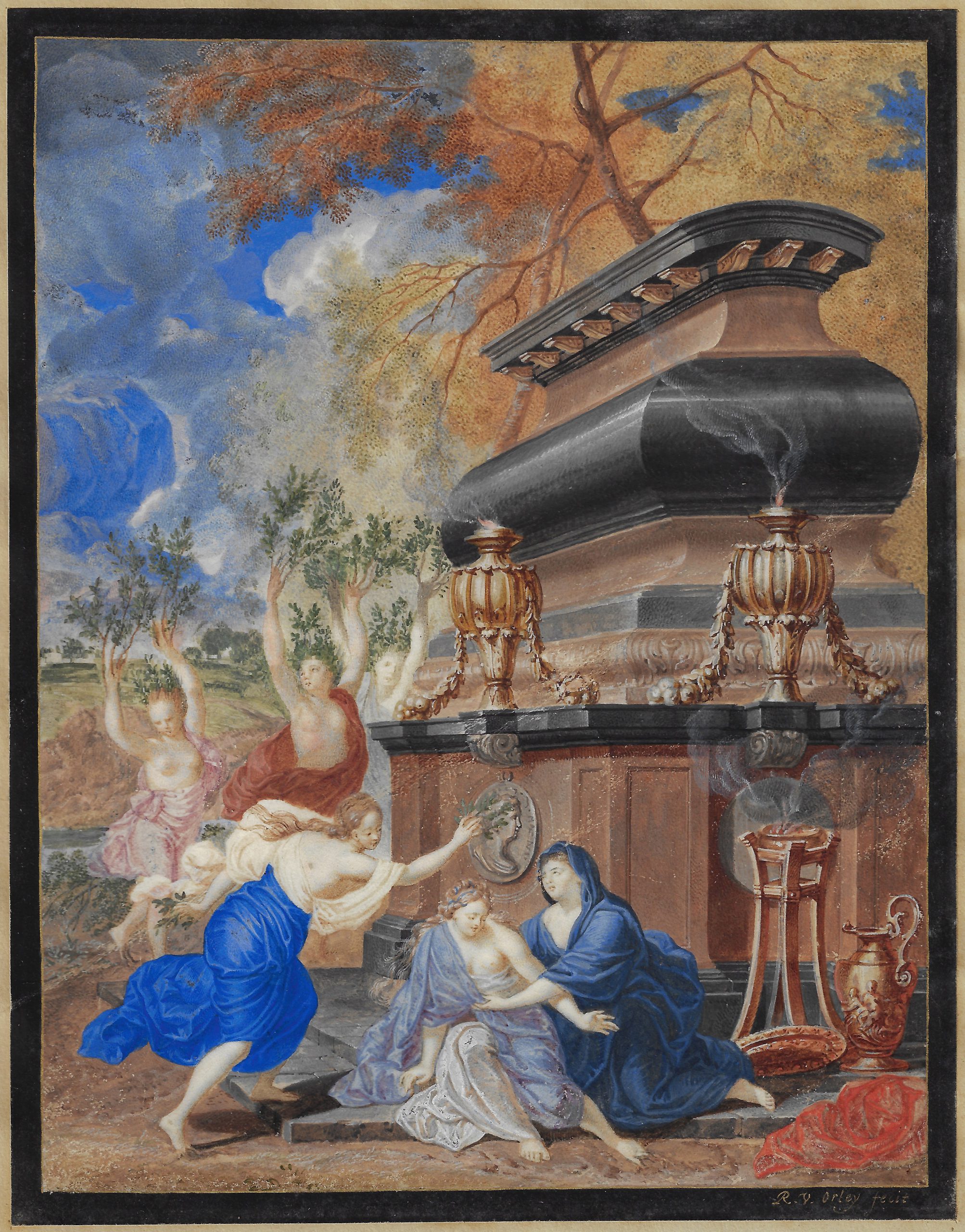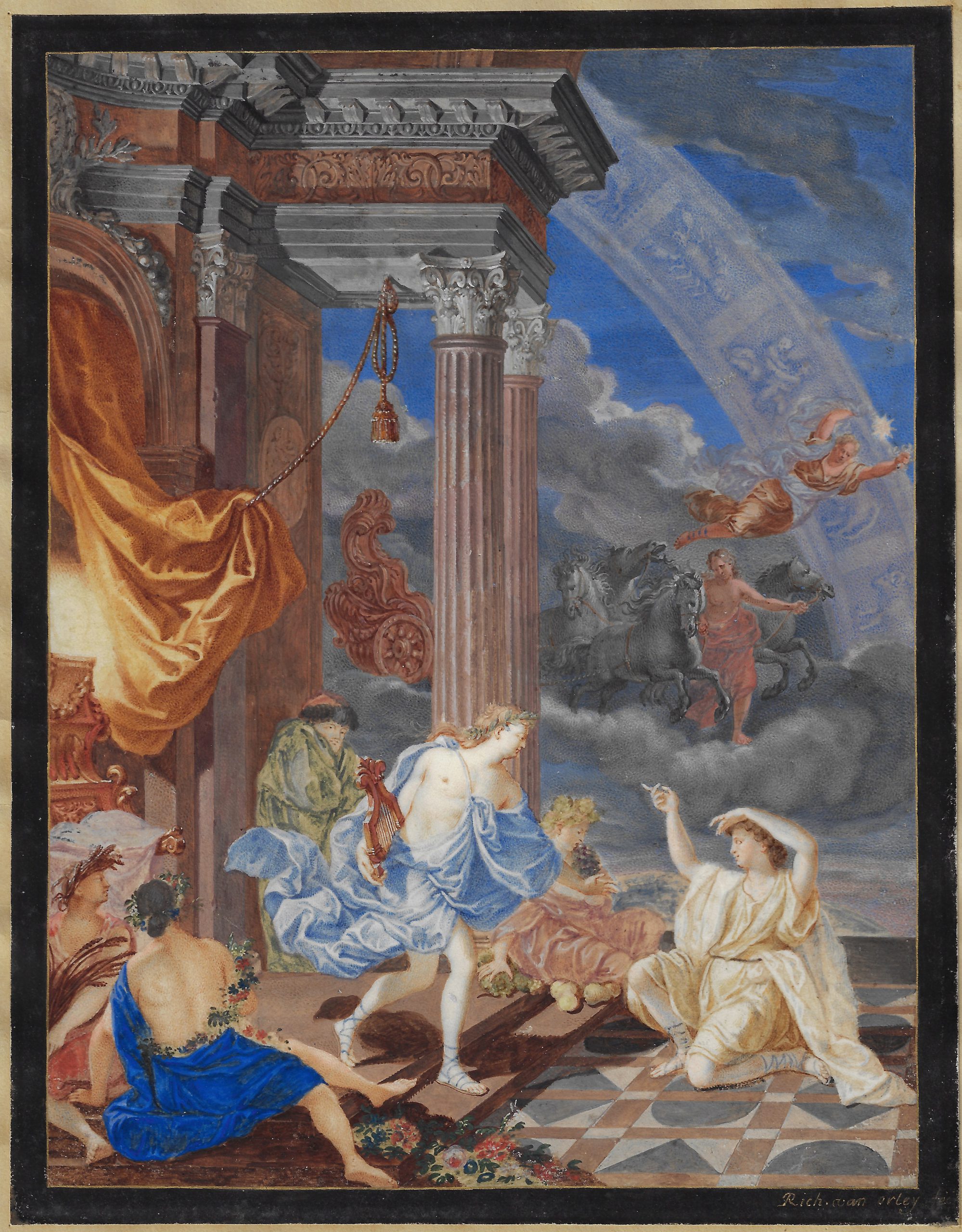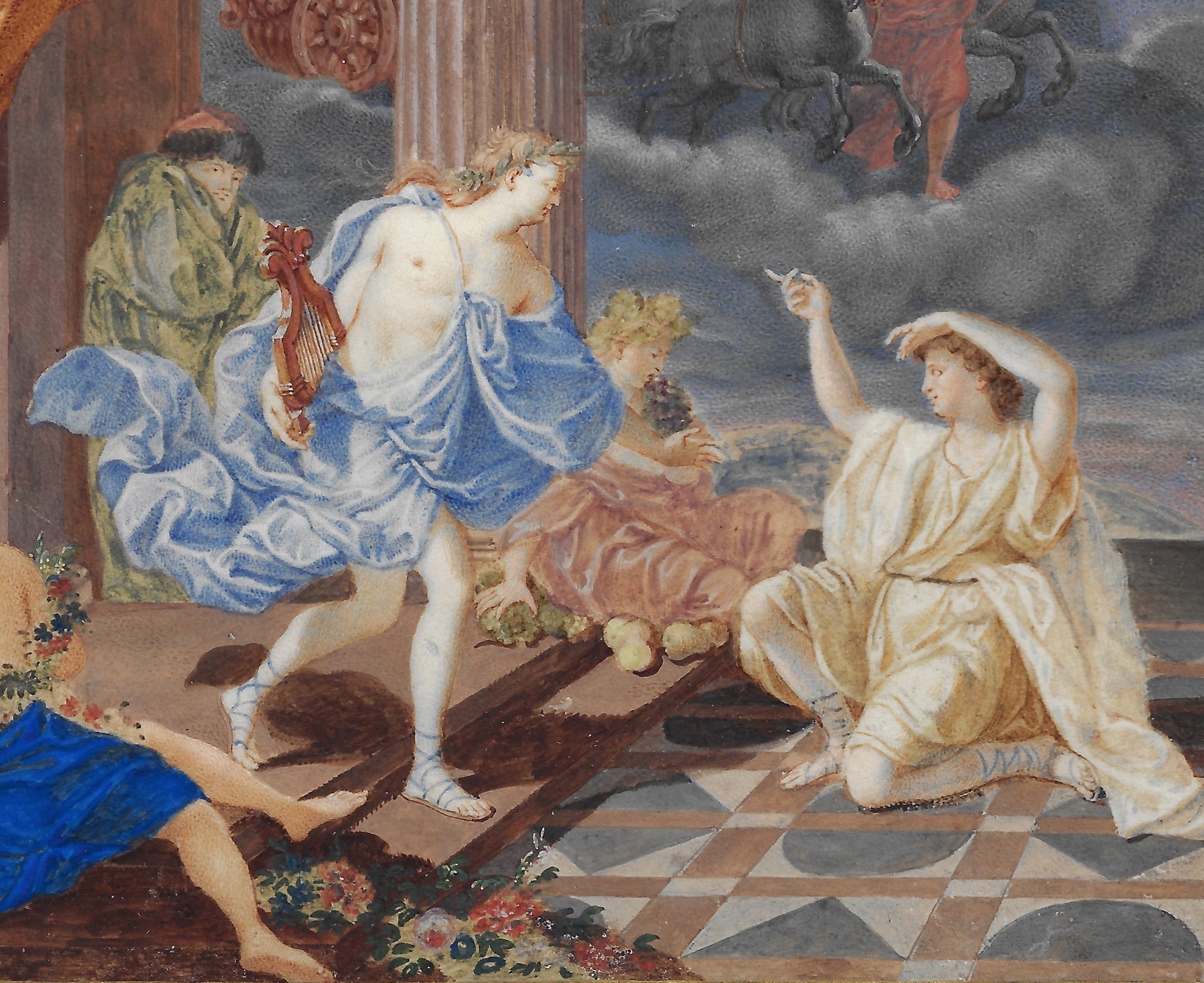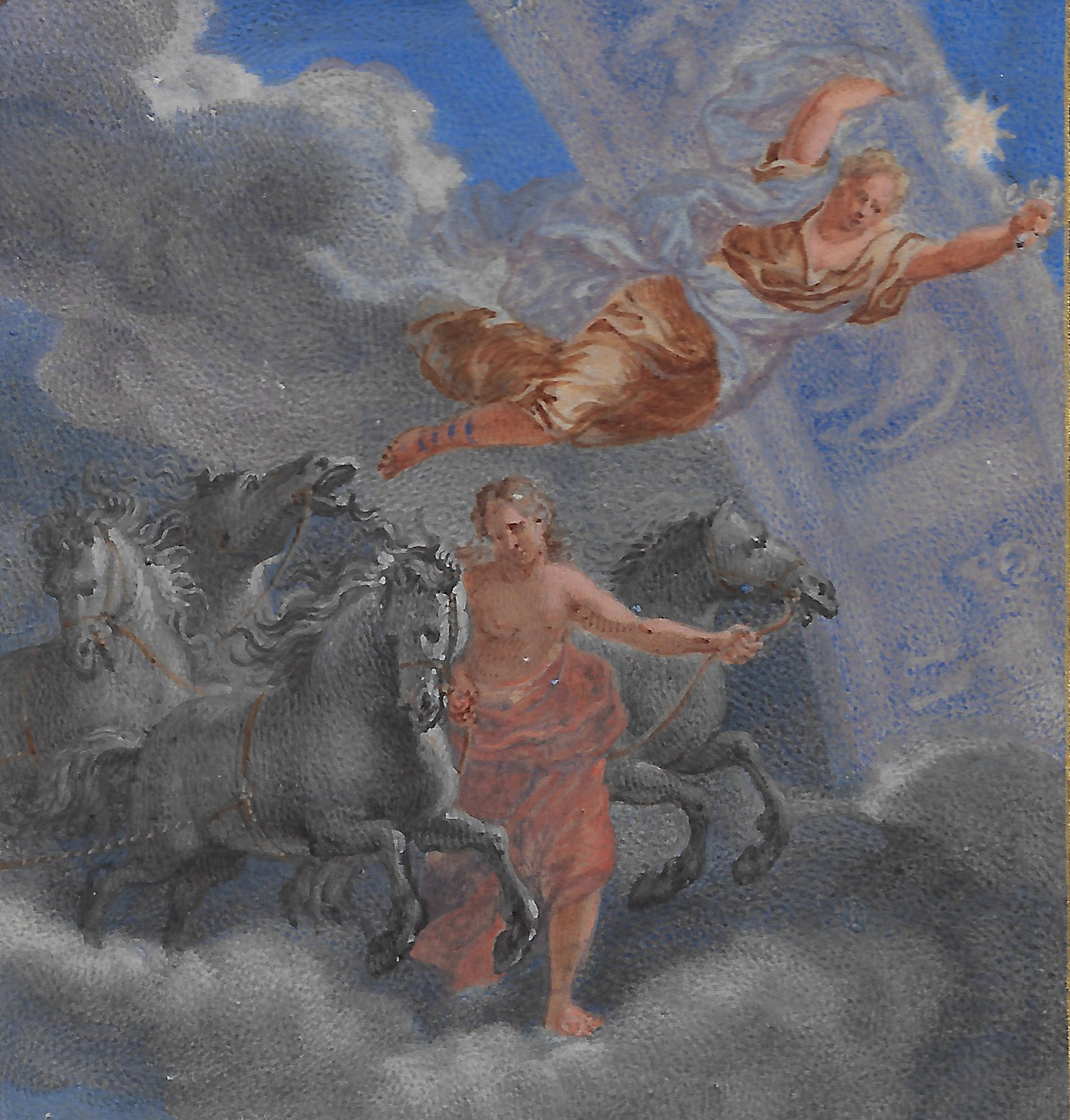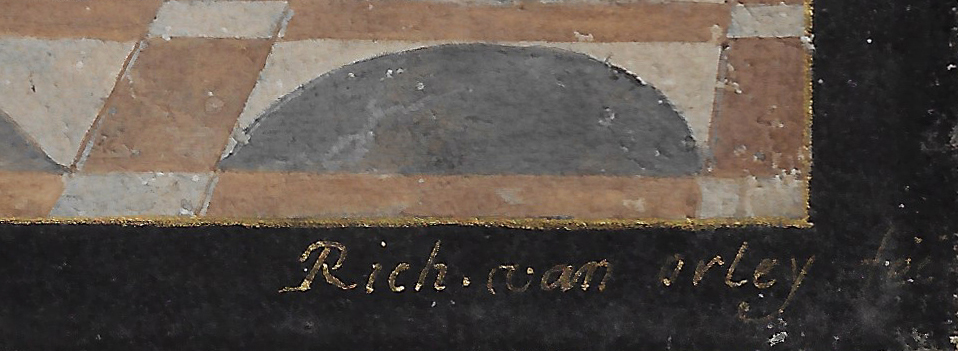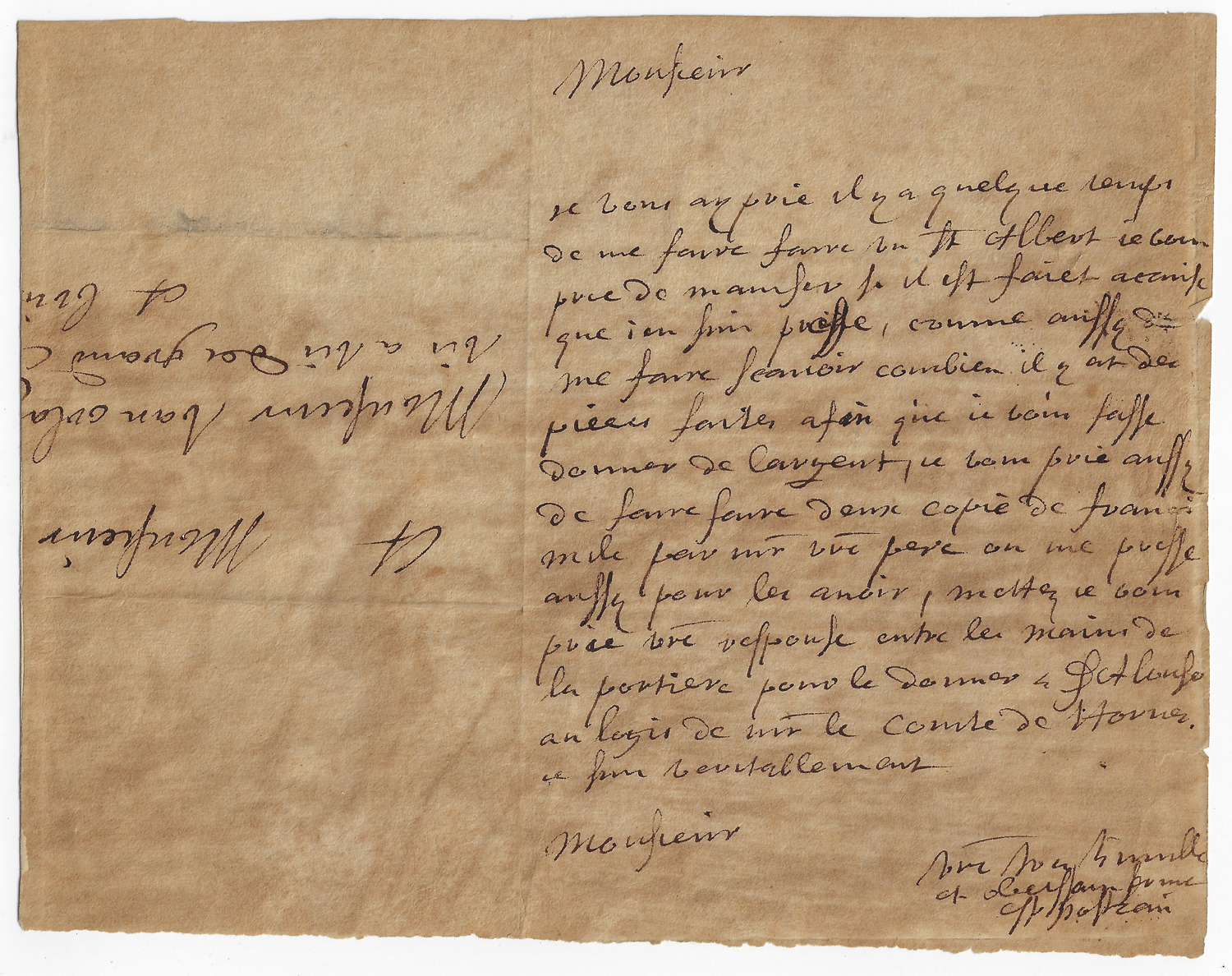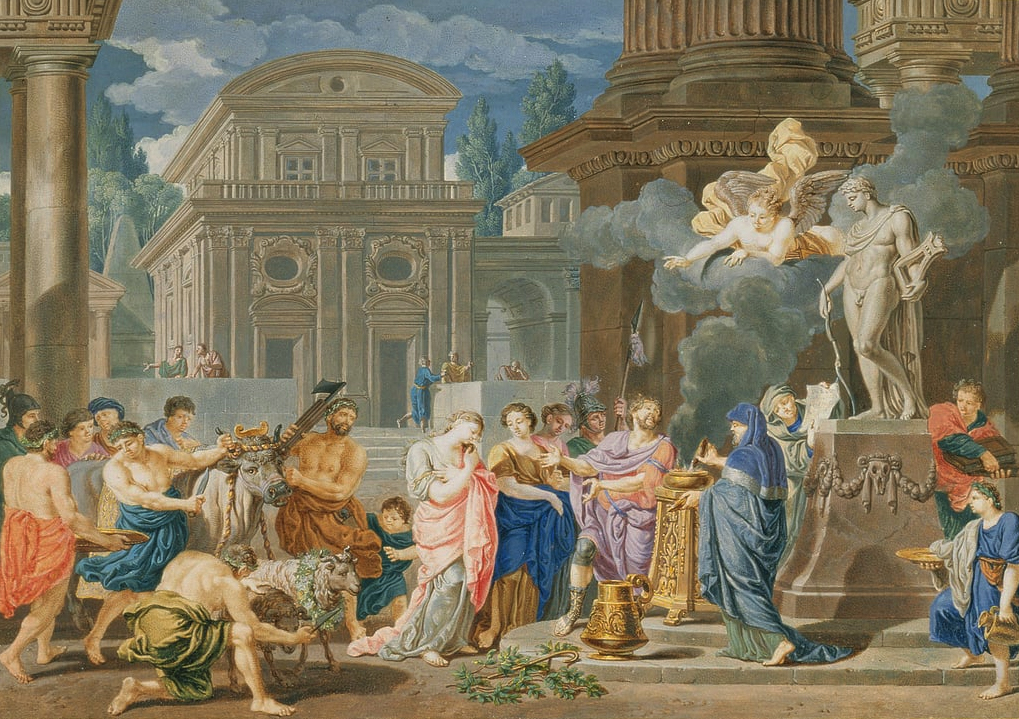RICHARD VAN ORLEY (Brussels 1663 – 1732 Brussels)
Richard van Orley (Brussels 1663 – 1732 Brussels)
A Large Sarcophagus Attended by Seated and Dancing Women
Watercolour and bodycolour on vellum, framing lines in black and gold, 191 x 148 mm (7.5 x 5.8 inch) and 194 x 152 mm (7.6 x 6 inch)
signed ‘Rich. van Orley fec’ (lower right, in gold, on black border)
Provenance
Estate of Sally Weld Webb, New York, 1996; thence by descent to Jane and Jonathan Weld, New York, 2019; thence by descent until 2021
Accompanied by a fragmentary letter addressed to Richard van Orley, cut to the size of this and the companion gouache and presumably used as a backing sheet in a previous framing.1
***
Richard van Orley was born in Brussels in July 1663 into an artistic family.2 His father, Pieter van Orley, called Siret was a landscape painter and miniaturist, his brother Jan was also a painter and his ancestor Barent van Orley (c.1490–1541) was a leading representative of the Flemish Renaissance school. Richard was taught the art of painting by his father, and is thought to have travelled to Italy, where he studied the works of the most famous artists of his time and before.
Richard van Orley painted almost solely in miniature. In addition to painting, he held the lucrative office of tax inspector, which allowed him to pursue his artistic desires to his own wishes, and was not dependent on the demands of his clients. Van Orley’s refined and sophisticated miniatures were greatly valued in the highest circles. Among his patrons was the Elector Palatine, Johann Wilhelm, based in Düsseldorf, who owned no less than eight miniatures by Van Orley – upon the Elector’s death in 1717, his widow, Anna Maria Luisa de Medici brought the miniatures to the Medici court in Florence, where they remain to this day, as part of the collections of the Galleria Palatina in the Palazzo Pitti.3
Miniatures by Van Orley are relatively rare. Dr Alain Jacobs recorded thirty-seven miniatures in his catalogue raisonné.4 The present two works are additions to this small corpus. In addition to the eight miniatures which are in the Palazzo Pitti, other miniatures are preserved in the Amsterdam Museum (collection Fodor), the Victoria and Albert Museum, London, the Royal Museums of Fine Arts in Brussels. Two further miniatures are in the collection of the Rosenborg castle, the summer residence of the Swedish Royal family, where they were documented as early as 1718.5
The present two gouaches can for instance be compared to Van Orley’s Offering to Apollo of 1702, one of the miniatures in the Galleria Palatina in the Palazzo Pitti (fig.).6 Our two well-preserved gouaches are rare additions to the small oeuvre of Richard van Orley, all the more rare since they have remained together as a pair, which is quite exceptional for miniatures by Van Orley.
SOLD TO THE ROYAL LIBRARY OF BELGIUM, BRUSSELS
1. “A Monsieur / Monsieur Van orla[y] / Vis a vis des grand […] / a bru[xelles] / [other side of page, upside down] Monsieur / Je vous ay prie il ya a quelque temps / de me faire faire un St Albert je vous / prie de [man…?] si il est fai et […] / que j en suis presse, comme aussy de / me faire scavoir combien il y a des / pieces faites afin que je vous fasse / donner de Largent que vous prie aussy / de faire faire deux copie de francois / [Mile?] par mr vtre pere on me presse / aussy pour les avoir, mettez ce […] / [price?] vtre response entre les mains de / la portiere pour le donner 4 […] / au logis de mr le Comte de [Hornes?] / ce [soir?] veritablement / Monsieur / Vtre tres humble / Et obeissant […] / […]”
2. For Van Orley, see: Alain Jacobs, Richard van Orley (Brussel 1663 – Brussel 1732), exh. cat. Brussels (Koninklijke Bibliotheek van België), 2013-14, passim.
3. Jacobs, op. cit., p. 15.
4. Jacobs, op. cit., pp. 120-130.
5. Jacobs, op. cit., pp. 126-128, cat. nos M24 and M25.
6. Bodycolour on vellum, 180 x 260 mm, inv. no. O.d.A 1911, no. 867; Jacobs, op. cit., p. 123, cat. no. M8.
